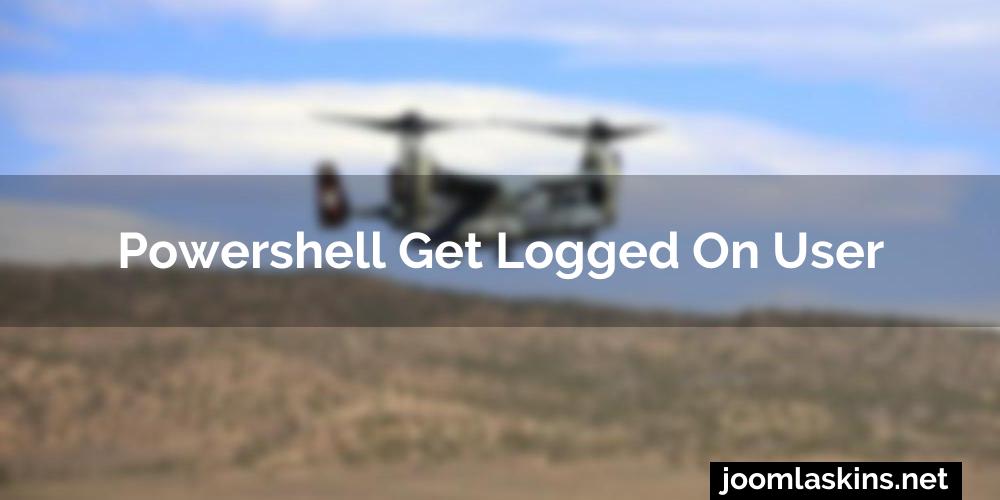Are you looking for a way to quickly determine who is logged onto a Windows machine? If so you’re in luck! Powershell provides a simple command that can help you get the job done. In this article we’ll explore how to use Powershell to get the logged on user.
Powershell Command to Obtain Logged On User
The Powershell command you’ll need to use to get the logged on user is Get-WmiObject Win32_ComputerSystem. This command will return the user that is currently logged onto the machine.
| Command | Description |
|---|---|
| Get-WmiObject Win32_ComputerSystem | Returns the user that is currently logged onto the machine |

Read this: Sonicwall Sma Arstechnica and 0x1 Task Scheduler.
System Requirements
Gettin’ the logged-on user with PowerShell requires that you have a basic know-how of some system requirements. The PowerShell command-line utility is supported on Windows versions — that’s Windows XP Windows Vista Windows 7 Windows 8 Windows 8.1 and Windows 10 — but you’ll need the right version of PowerShell in order to use it. While the basic functionalities are available with PowerShell 2.0 and up some features such as Workflow activities aren’t available till PowerShell 3.0.
On those Windows versions once you’re logged-in and have the right version of PowerShell the only other requirement is your own tech-savvy-ness in order to be able to type-in the correct command. Sure it’s a yawn-inducer to crack-open manuals but trust me putting in the default commands is simpler than shelling-out for a ticket to Russia in the chilly winter months.
Preparing the Environment
We’re venturing into the world of Powershell so we better make sure our environment is ready for the journey. If you haven’t used Powershell before don’t worry – it’s easy. As the saying goes ‘the only thing to fear is fear itself’.
First check the version of Powershell installed on your computer. We’ll need version 3.0 or higher of Powershell to ensure our journey is a successful one. To check your version just navigate to `$PSVersionTable` in your Powershell window. If your version is 3.0 or higher you’re set – now we can move on to the next step.
If you don’t have the right version of Powershell installed you’ll need to upgrade. Installing the newest version is generally easier than attempting to upgrade an existing version so that’s the route we recommend. Upgrading correctly saves time energy and ensures encounters with a variety of cyber-monsters will be kept to a minimum.
Once your Powershell environment is updated it’s time to get ready for our adventure in earnest. We’re about to find out how to get the logged on user in Powershell – let’s get going!
Summary of Usage
PowerShell’s get-loggedonuser command provides an invaluable service for those seeking to quickly and efficiently determine who’s using their computer and how. Whether it’s to figure out what family members are accessing which accounts or to pin down remote access issues this command provides a quick and easy way to gain access to important user information. Plus it’s surprisingly straightforward to use – all you need to do is enter the command followed by the username and you’ll be presented with a list of users who are currently logged on.
Not only can you use this command to gain access to user accounts but you can also use it to identify problems that may be causing login issues. By running the command with a log-only switch you can quickly determine if there are any problems preventing a user from logging in or if connections are being blocked. In short get-loggedonuser is a powerful tool that makes life easier for system administrators striving to figure out what’s happening on a machine.
Resources